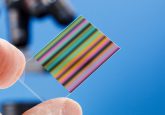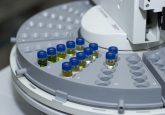GC–MS urinary metabolic profiles show promise in diagnosis of autism spectrum disorder

A group of researchers based in France have published data on a metabolomic study.
In a recently published paper, Patrick Emond and colleagues (INSERM, Tours, France) demonstrate the feasibility of a GC–MS-based metabolic profiling technique, using a multivariate analysis to differentiate urine samples from autistic and healthy children.
There is currently no reliable biological marker for autism spectrum disorders, which are currently diagnosed based on behavioral and developmental indications. Emond and colleagues investigated the feasibility of defining a ‘global biochemical signature’ for autistic children by using GC–MS coupled with the multi-variate analysis technique ‘orthogonal partial least-squares discriminant analysis’.
The team profiled urine samples from 26 autistic and 24 healthy children, using liquid–liquid extraction. They discovered relative concentrations of glycolate and succinate to be higher, and relative concentrations of hippurate, 3-hydroxyphenylacetate, vanillylhydracrylate, 3-hydroxyhippurate, 4-hydroxyphenyl-2-hydroxyacetate, 1H-indole-3-acetate, phosphate, palmitate, stearate, and 3-methyladipate to be lower, in autistic as compared to healthy children.
The team concludes that, “Evaluation of urinary metabolite profiles using a GC–MS method showed promising results”. Looking forward, they describe their plans to extend this study, “Further work including targeted studies, is needed to identify chemically those features that are potentially discriminant and to validate their clinical value.”
Source: Emond P, Mavel S, Aïdoud N et al. GC-MS-based urine metabolic profiling of autism spectrum disorders. Anal. Bioanal. Chem. 405(15), 5291–5300 (2013).





